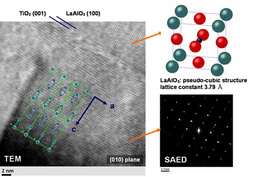July 2016 research round-up
Published in Neuroscience

Merging and Separating Memories
Our memories don’t sit in silos. They interact with each other, with newly learned information updating our stored knowledge. What’s more, our memories tend to be linked in time. If you try to remember what you had for lunch yesterday, you might recall not just what you ate, but also where you sat and who you were with.
It makes sense that we’d want to recall entire events rather than just snippets of a scene, but how does the brain accomplish this? The laboratories of Sheena Josselyn and Paul Frankland have studied fear memories in mice to find out.
They discovered that once a group of neurons has laid down a memory, the neurons don't return straight away to being the same as all the non-memory encoding neurons. They stay jittery, wanting to be a part of whatever happens next. In mice, this post-memory glow lasts around 6 hours. If a second event occurred within 6 hours, the jittery neurons that encoded memory 1 jump at the chance to be a part of memory 2. The result is that the groups of neurons that hold memories 1 and 2 partially overlap. Therefore, when you recall one of these memories, you’re more likely to also recall the second.
For memories that were formed further apart, say 24 hours, the neurons from the first memory are no longer jittery, and so don’t get recruited when the second event occurs. Therefore recalling one of these events doesn’t trigger recall of the second event.
Rashid et al. (2016) Competition between engrams influences fear memory formation and recall. Science 353: 383-387
How to Learn Best? Wait, Then Exercise
The cognitive benefits of exercise are increasingly acknowledged, particularly with regard to memory. What is less understood is whether there is an optimal time at which exercise should occur, relative to learning. Dutch researchers have investigated this by having healthy young adults conduct an associative memory test, in which objects need to be paired with locations. After initial training on the memory task, one group of participants immediately exercised at moderate intensity for 35 minutes. A second group waited for 4 hours before exercising, while a third group did no exercise at all.
When tested on their memory recall 48 hours later, the group who waited for 4 hours before exercising did significantly better than both the immediate exercise and the no-exercise groups.
This study provides considerations for scheduling sports and physical education programs in school environments.
Van Dongen et al. (2016) Physical exercise performed four hours after learning improves memory retention and increases hippocampal pattern similarity during retrieval. Current Biology 26(13): 1722-1727
Return of a Memory Molecule
A memory isn’t a memory if it doesn’t persist. At the level of single neurons, maintaining a memory demands that certain proteins are available to lock in changes in synaptic strength. One protein in particular, PKM-zeta, has been a prime candidate for this role. PKM-zeta is produced during learning and can increase synaptic strength, while blocking it prevents memory formation. This body of work began over 20 years ago, but recently came under scrutiny when conflicting reports, from multiple laboratories, were published in 2013. These studies removed PKM-zeta from mice to determine how important it really was to memory maintenance, and suggested the answer was “not very”.
Now, the group that published the original research, that of State University of New York (SUNY) neuroscientist Todd Sacktor, has evidence that they were correct after all. According to Sacktor’s new study, the conflicting results arose because the tools used in the 2013 studies weren’t sharp enough. Sacktor’s group showed that when PKM-zeta is removed from mice, another very similar protein takes over the same memory-maintaining tasks, therefore explaining the data from the 2013 reports. This suggests that PKM-zeta might still be a very important reason for why a memory persists, and at the same time raises caution about the limits of the tools experimentalists use to investigate the brain’s biology.
Tsokas et al. (2016) Compensation for PKMζ in long-term potentiation and spatial long-term memory in mutant mice. eLife 5:e14846
Follow the Topic
Your space to connect: The Psychedelics Hub
A new Communities’ space to connect, collaborate, and explore research on Psychotherapy, Clinical Psychology, and Neuroscience!
Continue reading announcement



Please sign in or register for FREE
If you are a registered user on Research Communities by Springer Nature, please sign in